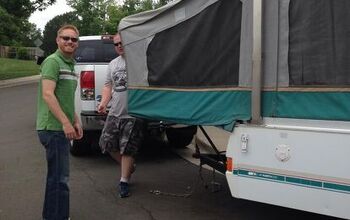100 of the Best Frugal Living Tips to Beat the Cost of Living Crisis

In a world often characterized by consumerism and materialism, the concept of frugal living emerges as a refreshing and intentional alternative.
It is not about being stingy and mean with money, but rather about taking a mindful approach to managing your resources. It involves making deliberate choices to prioritize needs over wants, and to avoid unnecessary expenses.
Today, I want to share with you one hundred ways to save money and embrace frugality without giving up on your quality of life.
Everyday expenses
1. Create a monetary budget and stick to it.
2. Cook meals at home instead of dining out.
3. Meal plan ahead of shopping so you can avoid impulsive grocery shopping.
4. Buy generic brands for non-essential items.
5. Brew your coffee and tea at home instead of buying it out.
6. Cancel unused subscriptions and memberships.
7. Use public transportation or a carpool.
8. Shop at charity shops, thrift stores for clothing and household items.
9. Negotiate bills such as cable, internet and insurance for better rates.
10. Perform simple home repairs and maintenance on your own when possible.
11. Embrace a minimalist lifestyle and declutter regularly.
12. Make your own cleaning products using simple ingredients, such as vinegar and bicarbonate of soda.
13. Unplug electronics when not in use to save on energy.
14. Implement a no spend month to break spending habits.
15. Buy in bulk for non-perishable items.
16. Use cash instead of credit cards to limit spending.
17. Mend and repair clothes instead of buying new ones.
18. Comparison shop before making a purchase.
19. Cancel or downgrade unnecessary insurance policies.
20. Opt for staycation instead of an expensive vacation.
Grocery shopping and cooking
21. Shop for groceries with a list and stick to it.
22. Buy produce that is in season for better quality and often lower prices.
23. Freeze leftovers for future meals.
24. Batch cook and freeze meals for convenience.
25. Participate in a community garden for fresh produce.
26. Use cashback apps or coupons for grocery savings.
27. Buy generic medications instead of name brands.
28. Make your own snacks and avoid pre-packaged ones.
29. Eat less meat and opt for a meatless meal once in a while.
30. Opt for frozen vegetables, which can be cheaper.
31. Grow your herbs and some vegetables at home.
32. Plan meals around sale items and discounts.
33. Shop at discount or bulk food stores.
34. Opt for tap water instead of bottled water.
35. Buy grains, legumes and spices in bulk.
36. Preserve excess fruits and vegetables by canning and freezing.
37. Join a local co-op for bulk buying opportunities.
38. Make your own bread and baked goods at home.
39. Avoid convenience foods and cook from scratch.
40. Participate in local food sharing or swapping programs.
Utilities and household expenses
41. Lower the thermostat and wear more layers in winter.
42. Use energy-efficient light bulbs and appliances.
43. Seal windows and doors to prevent drafts.
44. Negotiate your rent or consider downsizing.
45. Cancel cable and opt for streaming services.
46. Utilize natural light and reduce artificial lighting.
47. Hang laundry to dry instead of using a dryer.
48. Turn off lights and appliances when not in use.
49. Invest in a programmable thermostat.
50. Install low-flow showerheads and faucets.
51. Collect rainwater for watering plants.
52. Cancel unnecessary landline services.
53. Repair leaks promptly to conserve water.
54. Unsubscribe from unnecessary magazines and newspapers.
55. Create your own DIY home decor instead of purchasing new items.
56. Choose durable and timeless furniture.
57. Use cloth napkins instead of disposable ones.
58. Switch to reusable containers and eliminate disposables.
59. Buy second hand furniture or repurpose existing pieces.
60. Trade services with neighbors or friends.
Transportation and travel
61. Walk, bike or use public transportation.
62. Carpool with colleagues or neighbors.
63. Maintain regular car maintenance for fuel efficiency.
64. Shop for gas at the most affordable stations.
65. Use ride-sharing apps strategically.
66. Plan errands to minimize driving distances.
67. Downsize to a more fuel-efficient vehicle.
68. Participate in a car-sharing program.
69. Utilize rewards points for travel discounts.
70. Consider staycation for holidays.
71. Travel during off-peak season for better prices.
72. Choose budget accommodation when traveling.
73. Pack snacks and meals for travel to avoid dining expenses.
74. Use a refillable water bottle when traveling.
75. Look for free or low-cost activities at your destination.
76. Take advantage of student or senior discounts.
77. Exchange currency strategically to get better rates.
78. Opt for a prepaid travel card to manage expenses.
79. Explore camping or Airbnb instead of expensive hotels.
80. Consider house swapping for accommodation.
Personal finance on long term savings
81. Save your loose change in a jar.
82. Set up an emergency fund for unexpected expenses.
83. Negotiate interest rates on loans and credit cards.
84. Sell unused items online or at a yard sale.
85. Research and switch to a high interest savings account.
86. Consider refinancing high-interest loans.
87. Contribute to retirement accounts regularly.
88. Automate savings transfers to avoid spending temptations.
89. Review and adjust insurance policies for better rates.
90. Attend free community events for entertainment.
91. Participate in clothes swaps with friends or neighbors.
92. Open a separate savings account for specific goals.
93. Cut hair and groom pets at home.
94. Purchase quality items that will last longer.
95. Learn basic car maintenance and home maintenance skills.
96. Negotiate health care bills and prescription costs.
97. Re-evaluate firm plans for potential savings.
98. Invest in energy efficient appliances over time.
99. Research and switch to a lower cost bank.
100. Continue to educate yourself on personal finance for informed decision making.
Frugal living tips
Implementing a combination of frugal living and money saving tips can contribute to financial stability and a more mindful approach to spending in the long run. I hope this has been useful and you will implement at least 10 of these easy money saving strategies into your life.
What are your favorite ways to save money? Share your best hacks in the comments!
Next, check out these 15 Tips to Save Money From Around the World.























Comments
Join the conversation